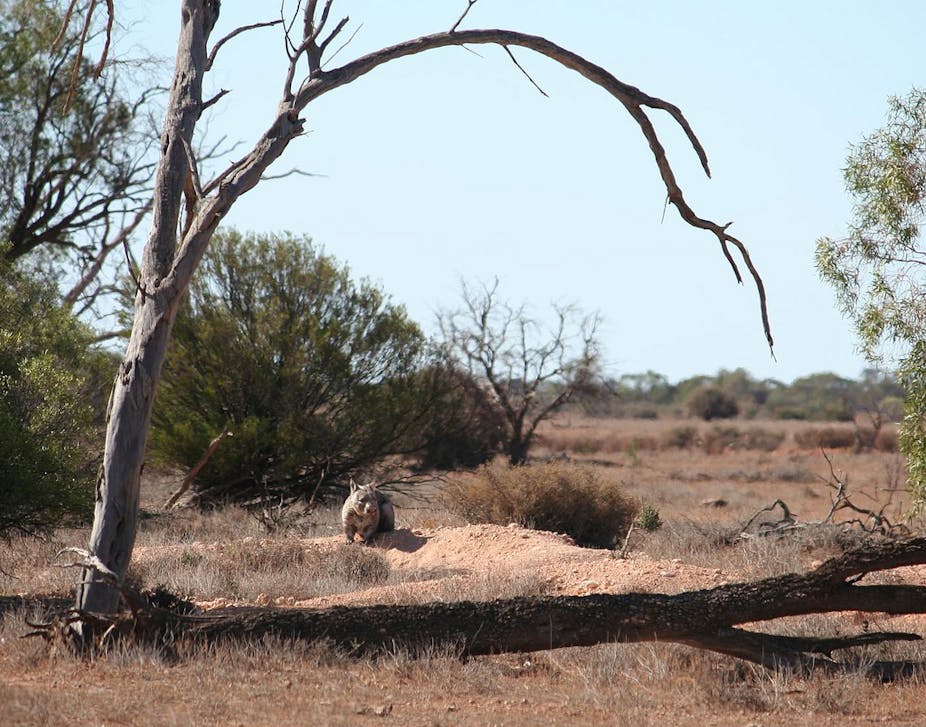Over the past 18 months, increasing numbers of southern hairy nosed wombats in the Murraylands region have been found in poor to emaciated condition with damage to their skin and other organs. The skin changes have included extensive hair-loss, changes to the coat’s colour and quality, bacterial dermatitis, and in severe cases haemorrhage and photosensitive dermatitis with a discharge. In the latter cases, these wombats have had severe liver lesions consistent with ingestion of a toxin.

Disease in Murraylands southern hairy nosed wombats may be due to a lot of factors, but are likely to be due to severe chronic nutritional stress. In the areas where we’ve found affected wombats, very few native grasses and other regular feed sources (such as thread iris) remain. Instead, the habitat is dominated by Carrichtera annua (Ward’s weed), Asophodelus fistulosus (onion weed), Marrubium vulgare (horehound), and Heliotropium europaeum (potato weed).
Liver lesions in the juvenile wombats we found with photosensitive dermatitis and liver disease suggested they had been poisoned by a pyrrolizidine alkaloid (PA) - a chemical substance plants produce to protect themselves from being eaten by insects. We looked for plants containing PA in the region where affected wombats have beDen found. Heliotropium europaeum - or potato weed - was the only one present.
We are now collaborating with toxicologists from the University of Queensland who are examining plant samples as well as wombat stomach, liver and faecal samples for toxic alkaloids. Investigations are ongoing.
Importantly, not all wombats with alopecia (hair loss) have been found to have liver lesions, and not all skin lesions are inflammatory. For many alopecic animals we’re either not finding much when we examine tissues under a microscope, or we are seeing changes more typical of metabolic or hormonal disruptions to hair growth cycles. Some of the causes we are considering include chronic nutritional stress, deficiencies (such as copper), other toxicities (perhaps from seleniferous plants, or chemicals) and hormonal disturbances. Many animals are also anaemic, and have higher than normal numbers of parasites. But so far we haven’t found any animals with sarcoptic mange, a scabies which affects wombats.

This research is still very much in the early stages. We think that wombats are turning to weeds such as potato weed because these species are taking over the usual grasses, such as Mitchell and spear grass. The spread of weeds may be because of overgrazing, or changes in weather patterns, but we just can’t be sure yet. We do know that wombats have not evolved to eat these weeds.
While we don’t know the causes we can’t be sure either how to counteract the disease. In the long term it may be possible to remediate the habitat by removing weeds and re-seeding with native grasses. Until we know more, we have to hope pockets of animals will survive where there is still good habitat.
_Research into the causes and management of this syndrome is currently being conducted by The University of Adelaide, Department of the Environment and Natural Resources of South Australia, the Wombat Awareness Organisation, ZoosSA, Brookfield Conservation Park and the Natural History Society of South Australia. This research is supported by a grant from the Nature Foundation of South Australia.

